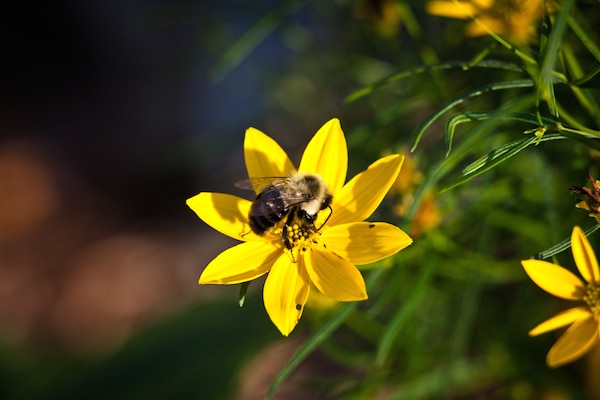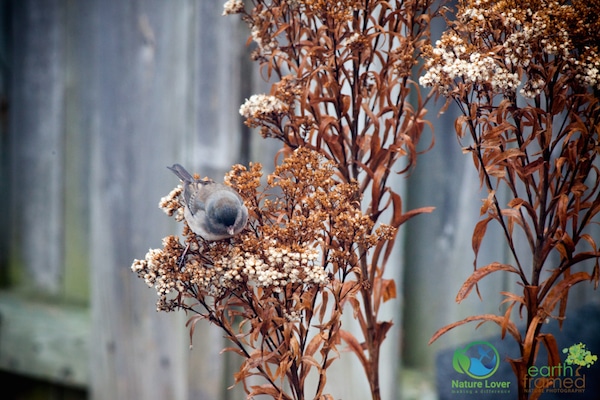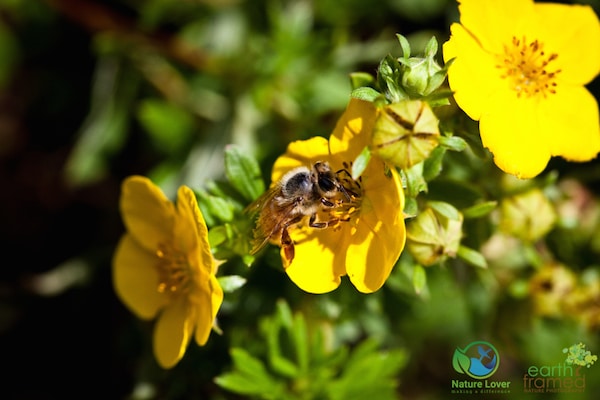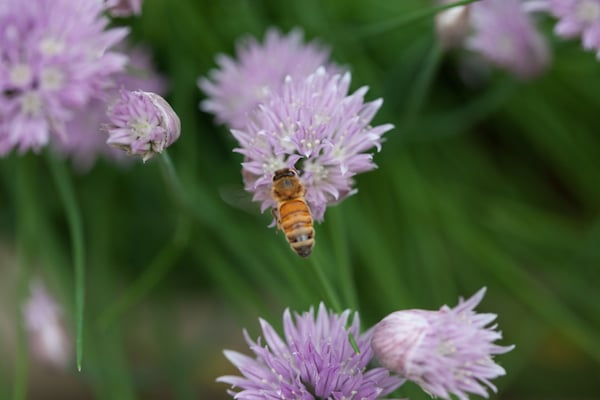The gardens were buzzing with actively in September, 2015. I ventured out three different days in September to see what insects were around and I found quite a variety.
You want insects in your garden, at least the beneficial ones. Some will pollinate your flower blossoms, some will eat destructive insects, while others may improve the soil condition, in way way or another. So planting a native garden is good for the pollinators, but its also good for your garden.
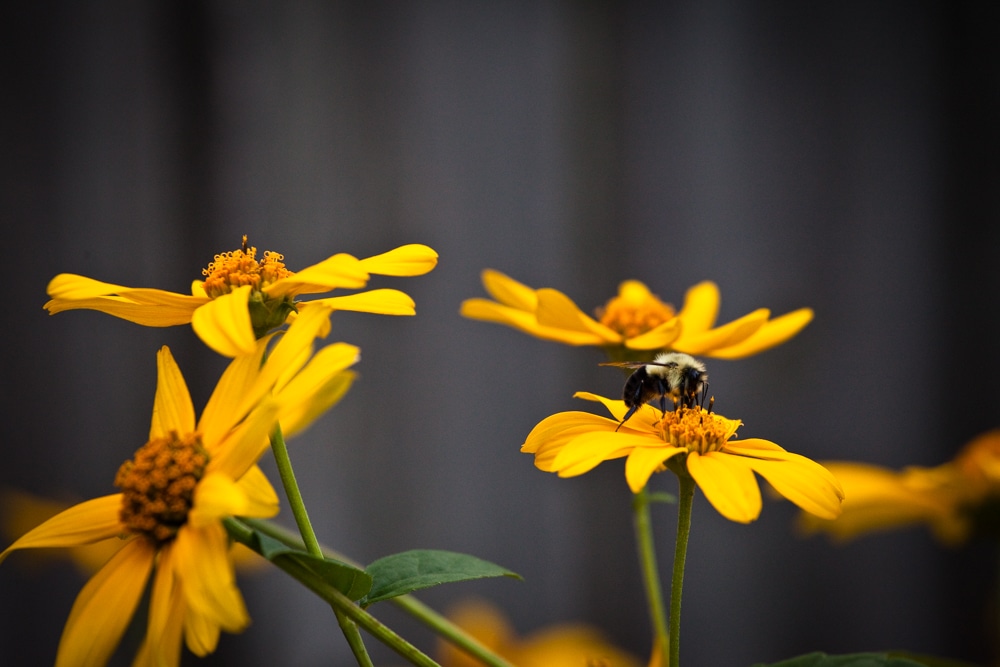
We had several bumble bees enjoying the nectar of the different flowers throughout the garden. Here is a bumble bee on the False Sunflowers.
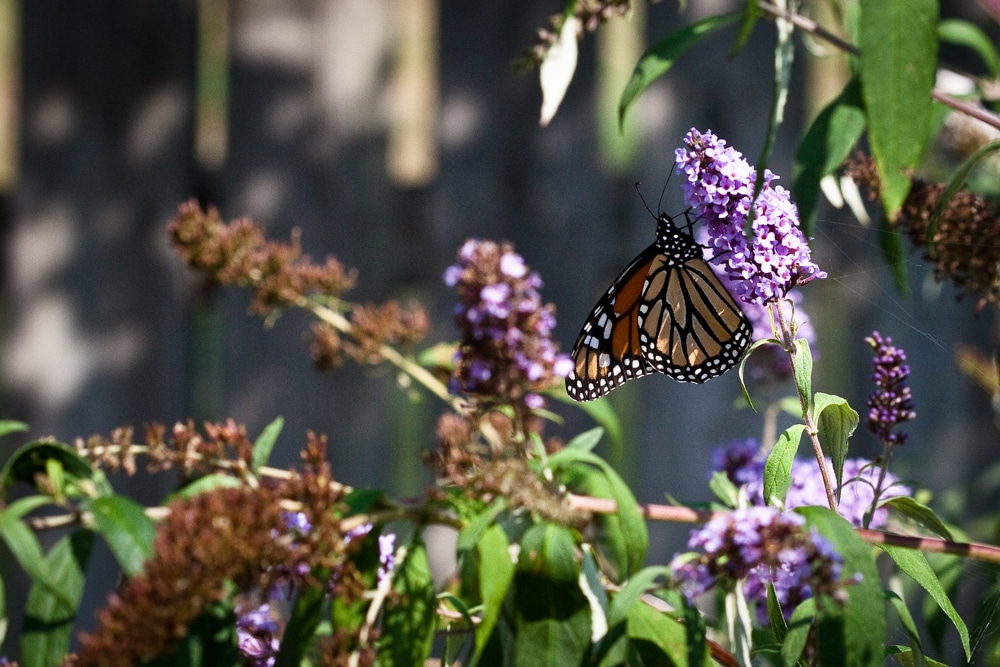
The Monarchs love the Butterfly Bush, I only wish it was native. I’ve read that it doesn’t get as much “action” as other native flowers but so far I’ve seen most of the butterflies that visit our garden only on the Butterfly Bush. At some point we will probably need to remove this bush since it is considered to be an invasive species. It may not get out of hand in our yard but birds can eat the seeds and deposit them somewhere else.
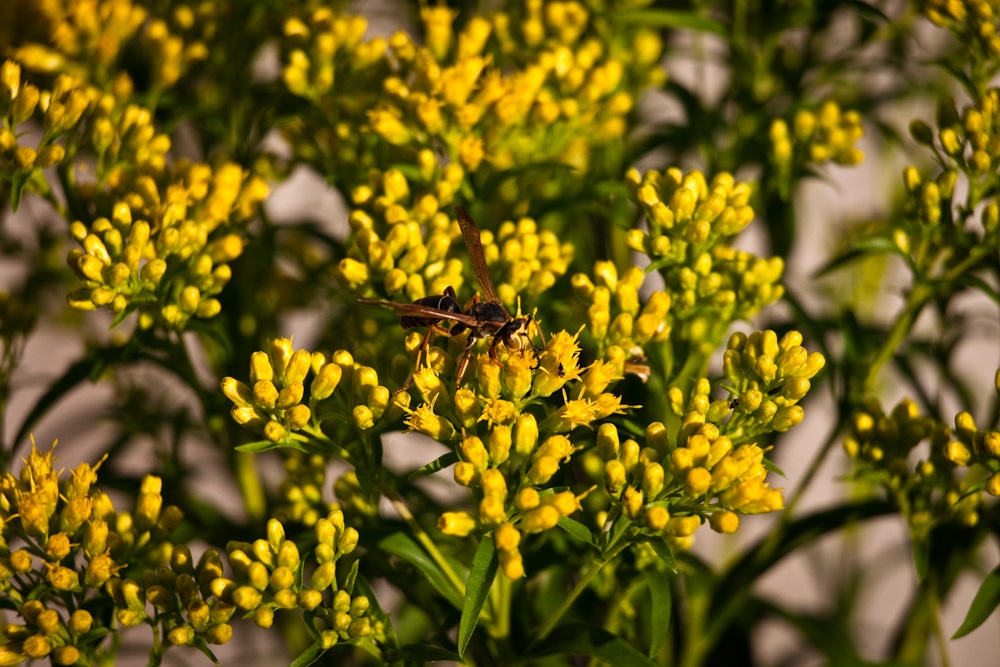
There were several Paper Wasps on the goldenrods and they did not bother with me as I got the lens of the camera fairly close to them. These are beneficial because they not only help pollinate but they also decrease the number of pest insects by eating their larvae. Having them in your garden is one thing, but you will want to remove any nests that are too close to your house since their sting is very painful and is dangerous to anyone with an allergy to insect stings.
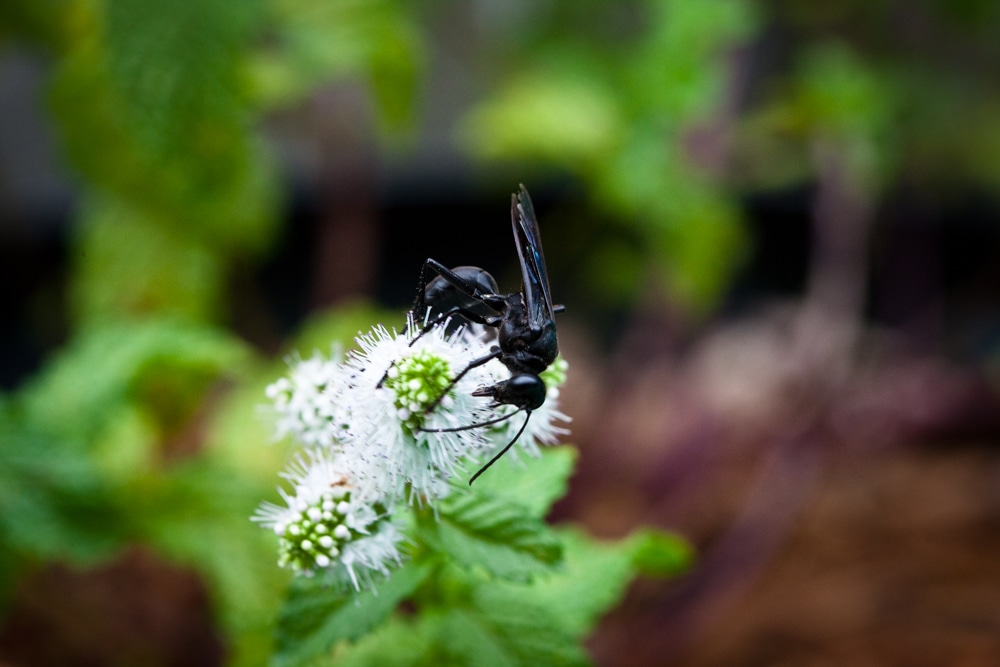
This Great Black Wasp is a very important pollinator, especially for milkweeds, and is found throughout most of North America. It is seen here on the Virginia Mountain Mint flower.

The Goldenrods were very popular with the pollinators in their first year. Here is a bumble bee enjoying the nectar before some Paper Wasps came and scared it away.
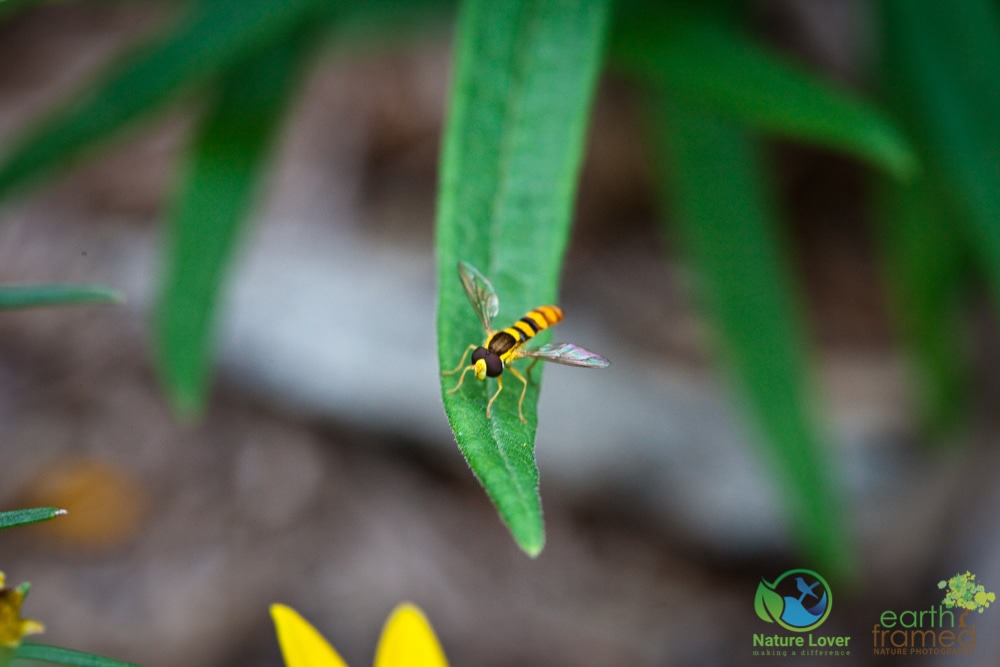
The Hover Fly, that pretends to be a bee, has been seen on various flowers and plants throughout the season.
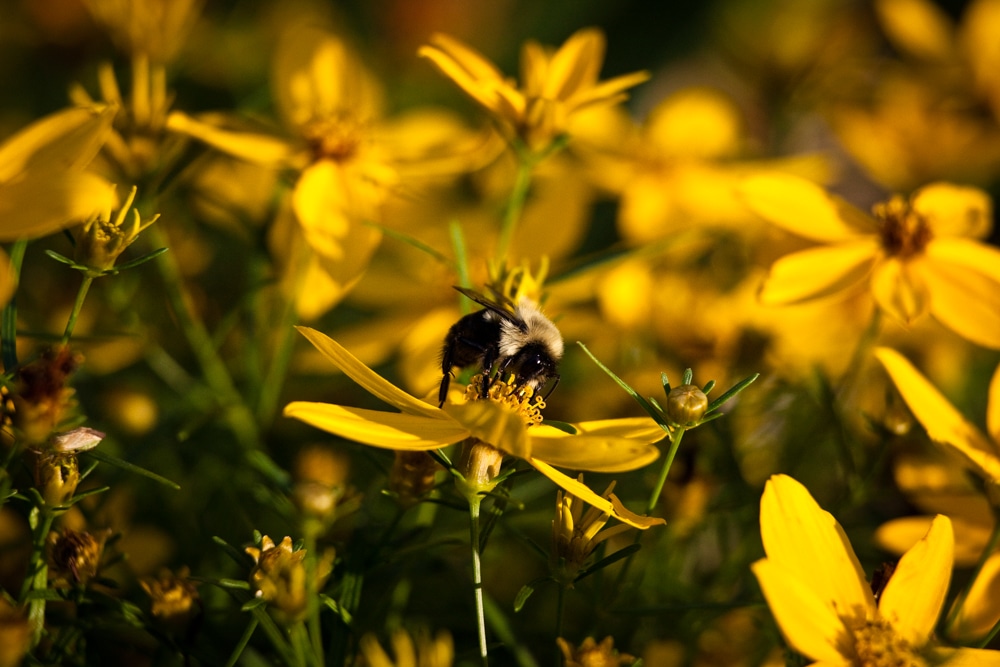
Here is another bumble bee enjoying the Tickseed pollen. He must have just started out since he doesn’t have any pollen stuck to his hind legs yet.
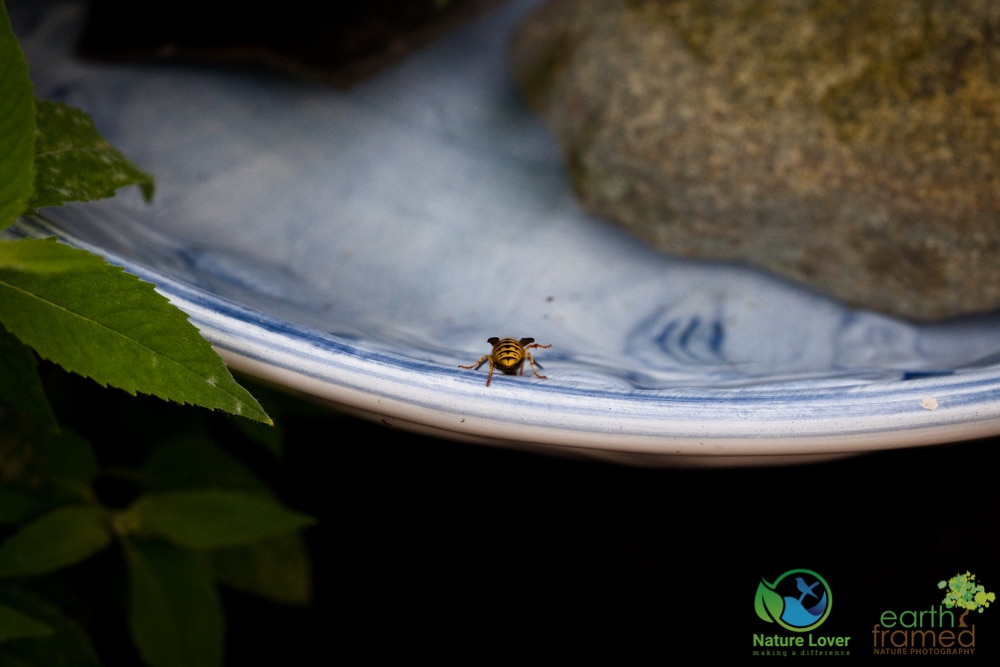
We often think about putting bird baths in our gardens for the birds but bees and other insects also need a water source. The dish I placed in one of the pollinator gardens has sloped sided and slanted rocks to allow a variety of creatures to be able to drink from it.
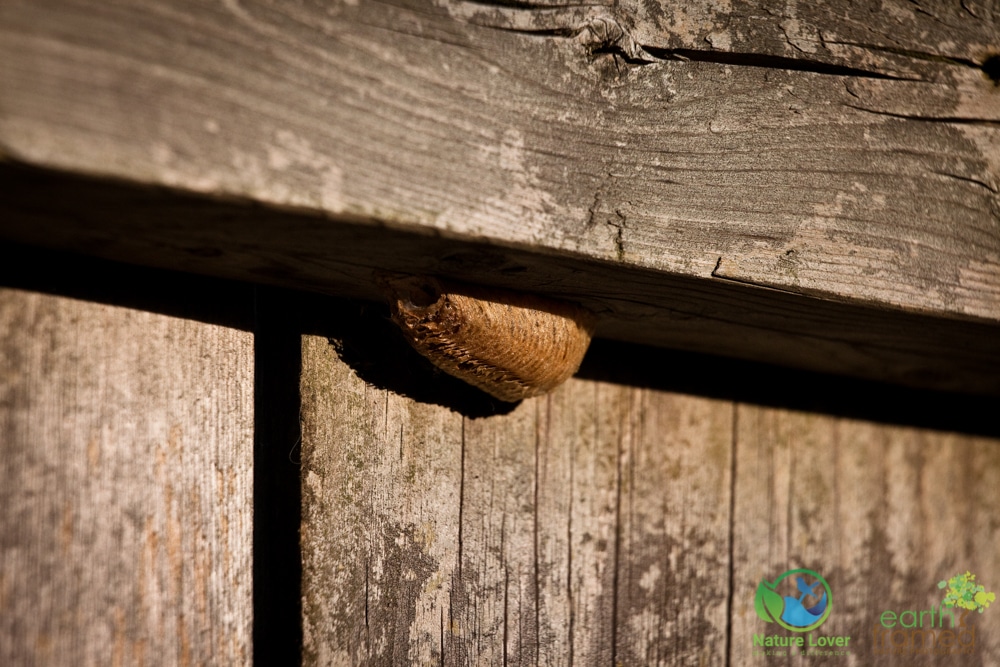
I’m not sure but I believe this is one of several praying mantis cocoons we have had in our yard. I have actually had a female creating a cocoon in between the treads of my truck tires. Not the best place unless she was a traveling mantis. ;o)
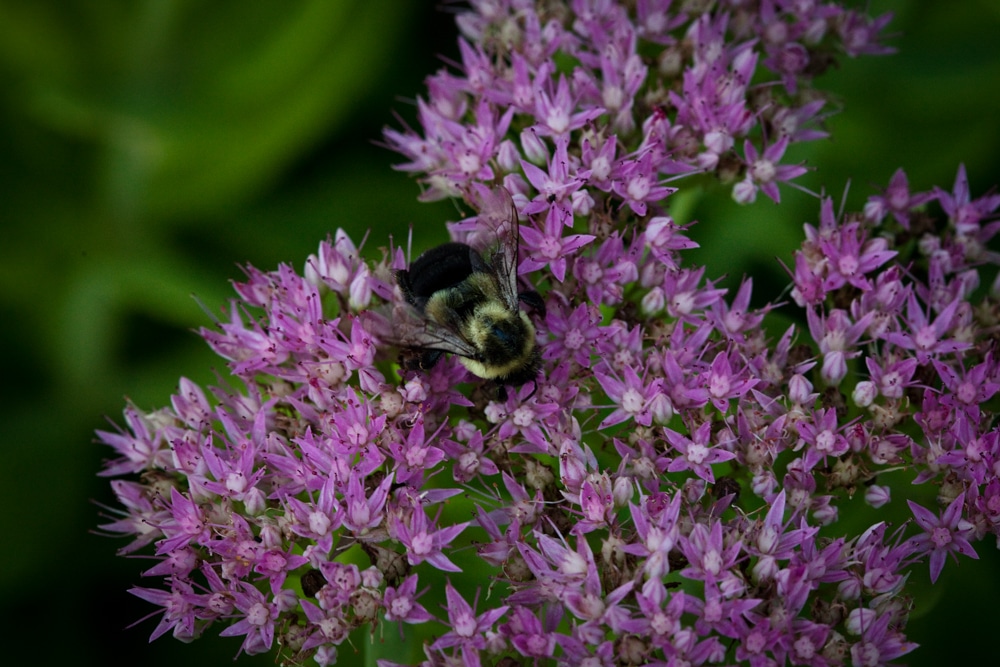
Seeing bumble bees in the garden is definitely a goal for any gardener. Here is another one on the flowering Stonecrop. We also have a small colony of Virginia (or Large) Carpenter Bees that have made a home in one of the posts on our deck. Although they look similar to bumble bees, they have a smooth, hairless and shiny abdomen. Bumble bees do not burrow into wood, they usually make their nests in the ground.
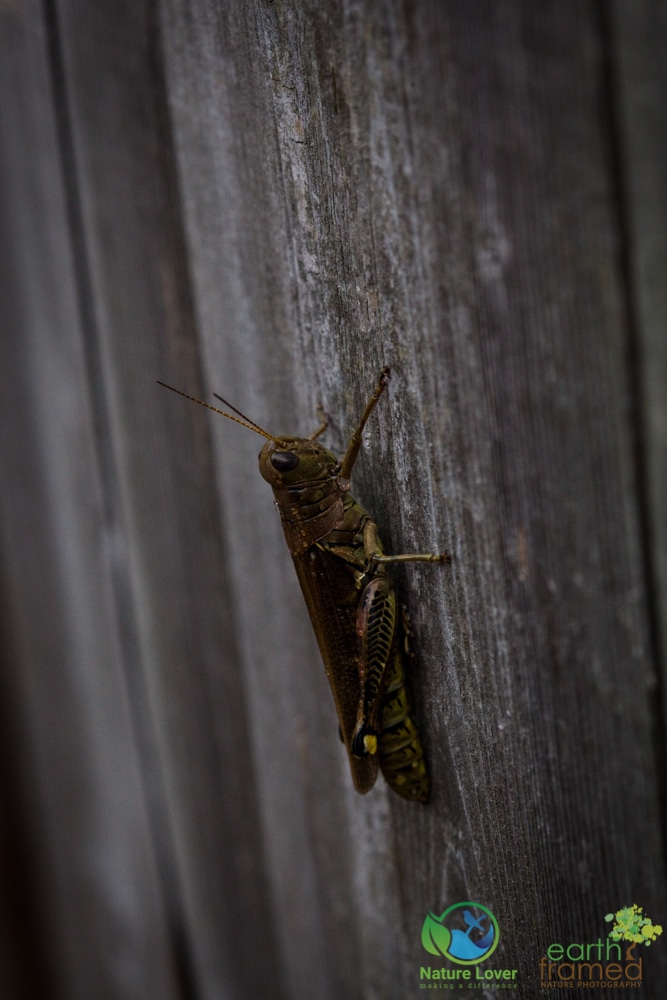
This was a large grasshopper found on the fence. Grasshoppers, in large numbers, can be considered pests in a garden since they will eat the leaves of your plants. I believe this is a Differential Grasshopper.
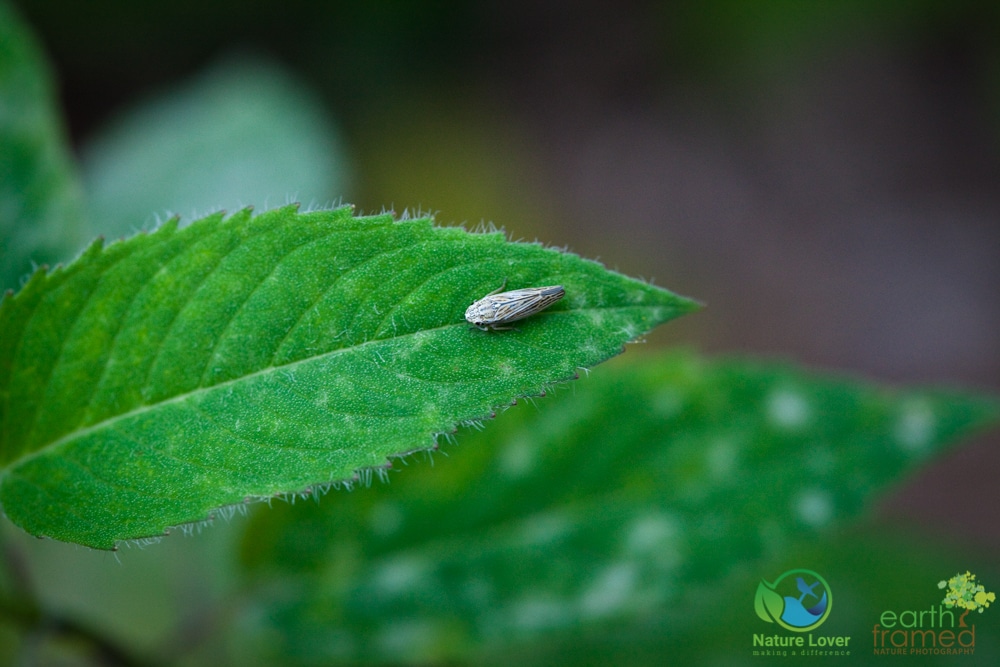
This Leafhopper is a plant-feeding insect that sucks the sap out of vascular plants. If you had a lot of these in your garden you may want to deal with them sooner than later. Pyrethrins are an eco-friendly solution that would need to be frequently reapplied. You can also encourage, or lure, Praying Mantis and Lady Bugs into your garden to naturally control these bugs.
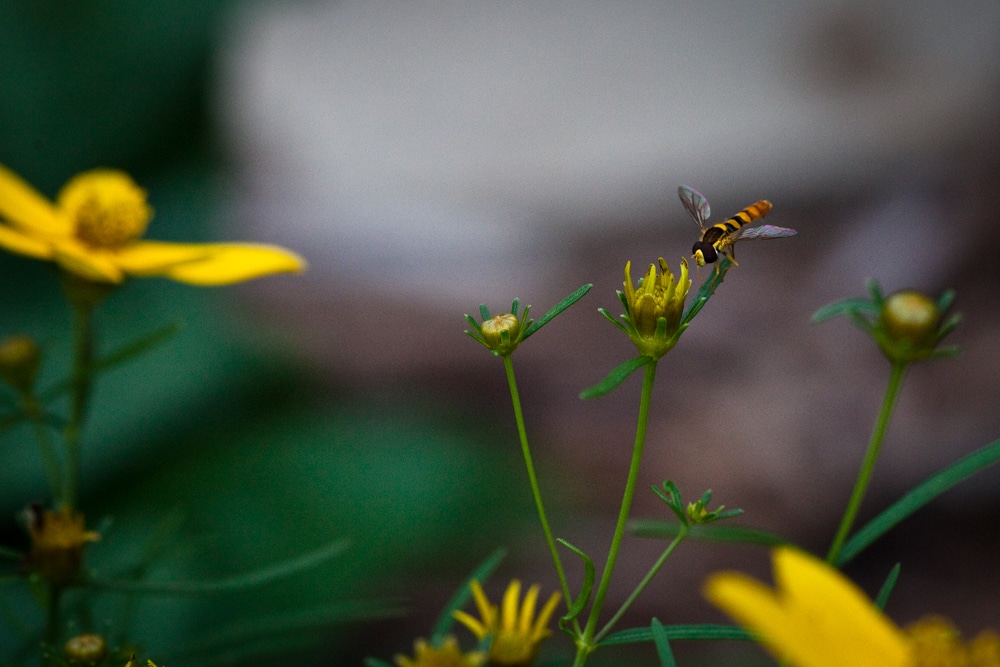
Another hoverfly. These are also called Flower or Syrphid Flies. There are over 6,000 species of hoverflies in the world and they can be found on every continent except for Antarctica.
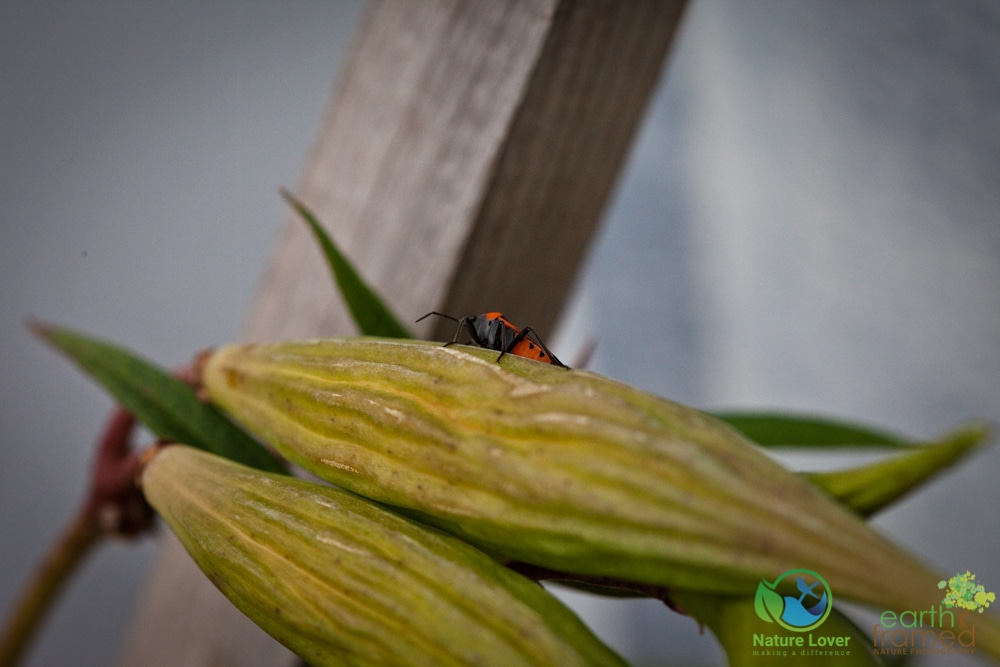
This is the Large Milkweed Bug on our Swamp Milkweed pods. These bugs feed on the milkweed seeds and are considered a nuisance if you plan on collecting your seeds. If this is the case you will have to remove the bugs yourself since they have no predators. Don’t worry, they don’t bite. On the other hand, if you don’t care where the seeds go, then you can leave them alone. You will find these bugs, and their dark red offspring, on the plants throughout all stages of growth.
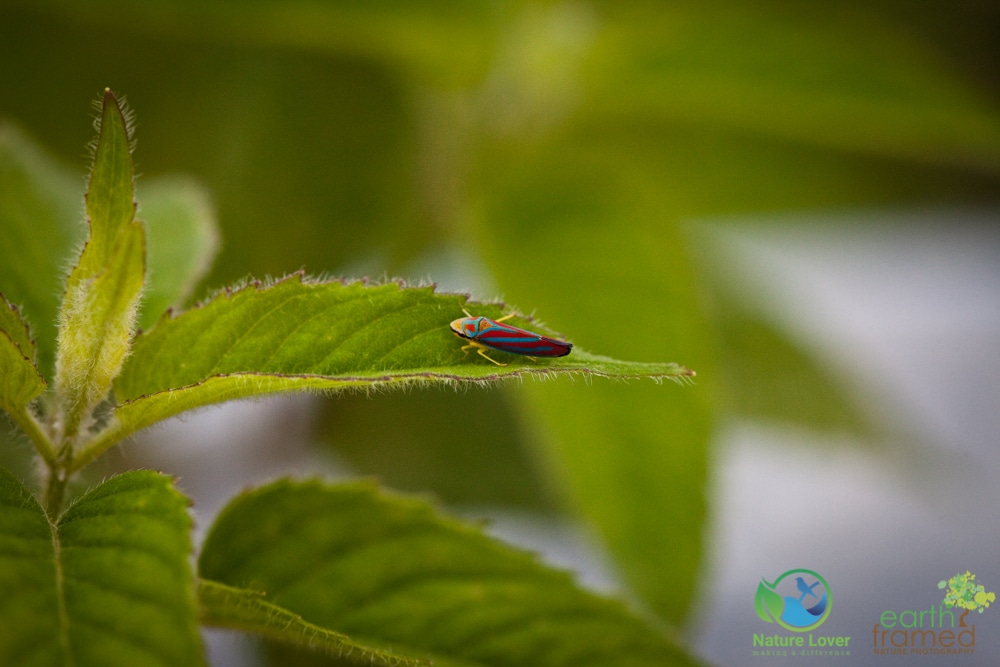
Here is another leafhopper I found in the garden. Isn’t is colourful? This is the Scarlet-and-green Leafhopper. These little guys will such the life out of weeds and cultivated plants in your garden. If they inject their saliva into the plant it will cause that leaf to wither and die. We did not have too many of these insects in the garden so I wasn’t too worried. If you have too many you will want to ‘naturally’ deal with them.

The honey bee was resting on one of the dry river bed rocks and let me get as close as I wanted.
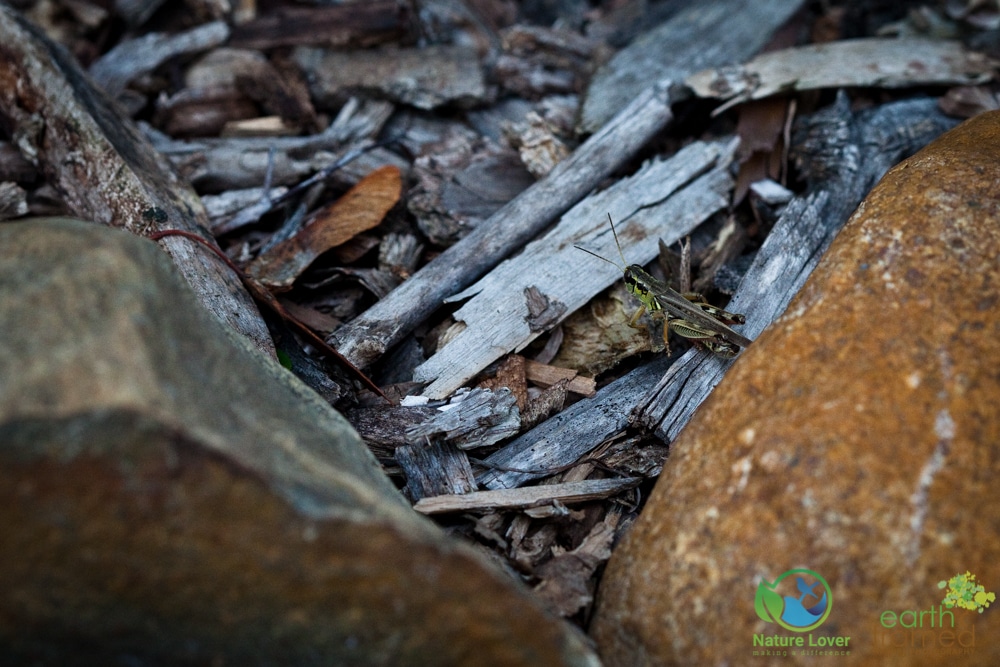
Another grasshopper that was found in our yard. Unlike the year before, the crickets and grasshoppers don’t seem to be having a population explosion. Last year the crickets were so numerous that they were actually too loud.
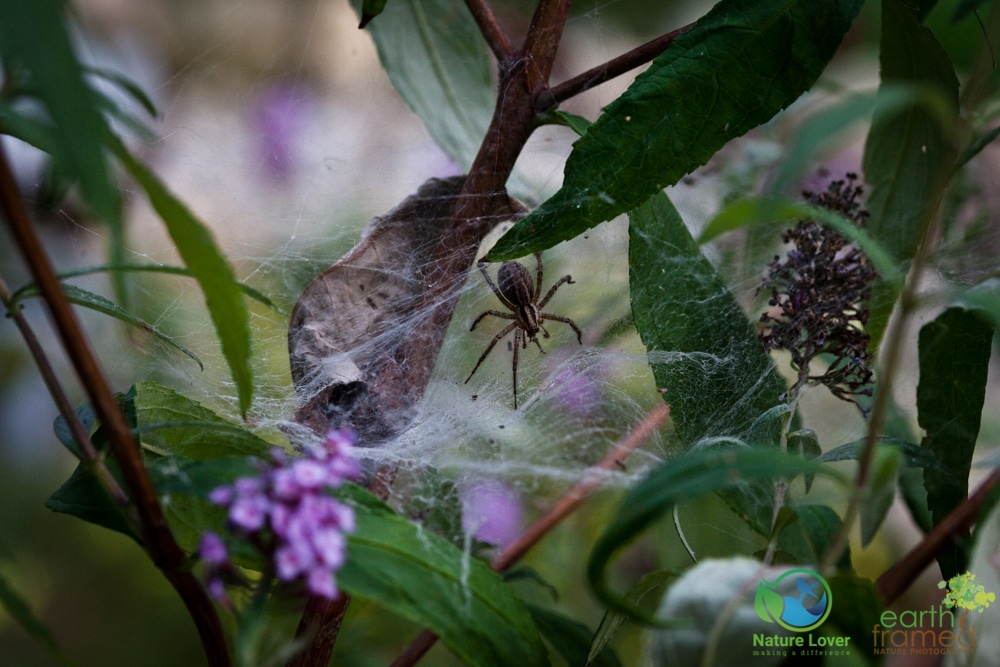
Last year we had a Black and Yellow Garden Spider living in our Butterfly Bush. This year we have a Grass Spider in the same place. These spiders create a ‘funnel-like’ web and I noticed this one actually hides inside of the left shown beside her in the image. Fascinating.


